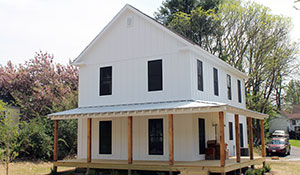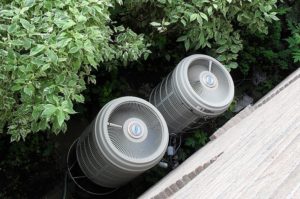March 23, 2021
Get Your Home Ready for Spring
It’s natural to notice drafts and other home efficiency issues during peak winter or summer with temperature extremes and the corresponding energy bill spikes. As the weather starts to turn warmer and sunnier, taking a little time to assess your home’s readiness for spring and the coming heat of summer can go a long way to making your home more efficient, comfortable, and safe.
Getting your air conditioner ready
First, clean any debris off the outside unit and make sure it is free of obstructions. Next, turn your AC on before the weather gets too hot to make sure it is blowing cool air. Check your filter and change it according to manufacturer recommendations. For some units, it can be as often as monthly. If possible, consider a professional tune up. A twice-yearly tune seasonal tune up and regular filter changes are the best way to ensure your system is running efficiently.
If you have window AC units, make sure they are level and well-sealed in the window, and clean the filter, fins and coils.
Exterior inspection and managing water runoff
Take a walk around your home looking for any visually obvious breaks or cracks in windows, masonry, the foundation, and exterior walls. Note hanging gutters and shifted or missing shingles. Gaps around windows and doors are prime opportunities to stop leaks with weatherstripping and air sealing. Check and clean your gutters before the spring showers start in earnest. Look for any signs of water pooling or damaging the foundation of your home. Adjust downspouts to direct water away from your home. Depending on your DIY comfort level, you may want to engage a professional to address any issues.
Make the most of your thermostat and curtains
Spring is that glorious time of year when it’s often possible to leave the heat and AC off and throw those windows wide open. Before you lose yourself in the mild spring weather, program your thermostat now for hotter weather. The Department of Energy recommends 78° when home and 85° when away in the summer.
In the dark of winter, it’s instinct to close the curtains when the sun goes down and open them for precious daylight. During summer you want to do the opposite. Close curtains on windows receiving direct sunlight during the day to prevent heat gain. Also, make sure drapes or curtains, and furniture too, are not blocking air registers to allow for free circulation of cooled air from your HVAC system.
Safety check
Testing your smoke detectors, and any carbon monoxide detectors, at daylight savings time is an easy way to ensure this vital safety check happens at least twice a year. If you have a fire extinguisher, make sure the pull pin is not missing and the seal is intact. Most home fire extinguishers have a pressure gauge that indicates the pressure level of the internal contents. If the gauge needle falls too low and reads outside of the green zone on the gauge, it’s time to replace your extinguisher.


